|
| |
Antique fine Anglo Indian (Vizagapatam)
Sandalwood, horn, and ivory basket form box Circa 1870
Please click on images to enlarge | slide show | thumbnail index |
Reference: SB536
Description:
SB536: An Anglo Indian sandalwood basket veneered in horn and ivory. Although such
baskets were a popular Vizagapatam design, this one is very unusual
in that it combines both solid ivory panels incised and lac filled
in traditional plant motifs and fretted ivory work. Furthermore, the
central cartouches are engraved with representations of Indian
deities and not floral designs which was the normal decoration on
such baskets. It stands on lion paw feet. The handle is decorated
with scrolling flowers in characteristic fashion. Circa 1870.
Origin: India,
Vizagapatam; Circa: 1870; Materials:
sandalwood, horn ivory.
Size: 30.5 cm wide by 33.2cm by 9.5cm: inches wide
by inches by inches.
Condition: good
overall; there are some small losses to the fretted ivory; see images
|
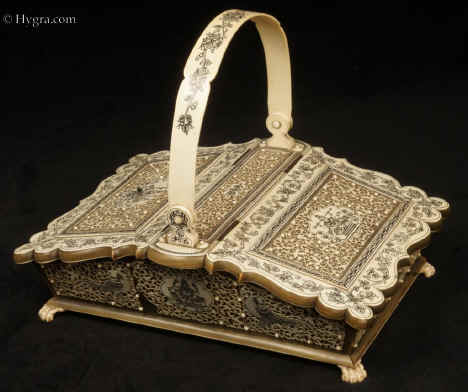
|

The workmanship in this basket is extremely fine. This is all the more
so when consideration is given to the difficulty of working in materials
such as ivory and buffalo horn. When this work was made it was
prestigious and expensive.
There are similarities between the work in this basket and a
davenport sold by Christie's in New York (lot 424 30th January 1988).
The exhibition label inside the davenport is inscribed ' executed by
Royal workmen in the Rajah's palace. Name of chief Artisan I.
Venkatadas...'

|
See:
A davenport illustrated at Fig.98 ((courtesy of Christies) of Furniture
of British India and Ceylon, Amin Jaffer, V&A Publications
2001 ISBN: 1851773185
Davenport of sandalwood
veneered with tortoiseshell and ivory and overlaid with ivory fretwork
made by I. Venkatadas for G. N. Gajapathi Rao, Maharaja of Vizianagram,
Vizagapatam, c.1880.
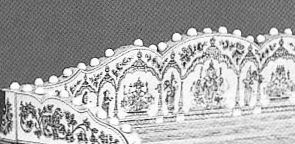
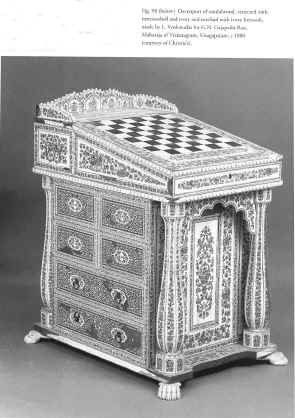
|
Please click on images to enlarge | slide show | thumbnail index |

|
The work of the Indian artist/craftsman was recognized as an
invaluable source for satisfying the need for furniture and boxes, which
would both serve and enhance the English household in India . It was not
long before the English wished for their households at home to be
enriched with such exotic work. India was rightly perceived in Europe as
a land of immense culture. Architectural drawings of Indian buildings
were already in circulation. Indian mythology, religion and iconography
fascinated the mind of the Europeans at a time of intense intellectual
and artistic exploration.
|
See: Antique
Boxes, Tea Caddies, and Society, 1700--1880
Antigone Clarke & Joseph O'Kelly, ISBN: 0764316885
"The most popular "basket" box was veneered in incised
ivory. It featured two sloping lids and a central handle. Horn edgings
were usual, giving a defining contrasting color to the shape. The ivory
baskets were decorated with floral borders in incised and lac filled
ivory and also featured a central complementary motif."
|
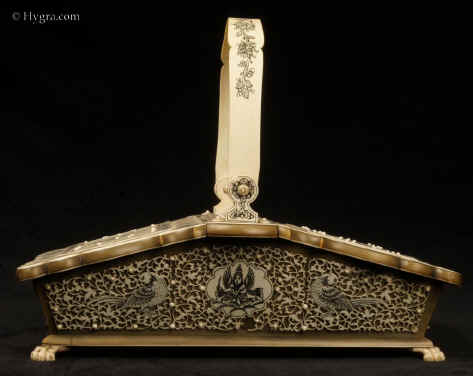
|
Please click on images to enlarge | slide show | thumbnail index |
After the middle of the 18th century, the East India Company was well
ensconced in the Indian centers of British trade and power. One
commodity they and the Royal Africa Company traded in was elephant tusks
from Africa . These were much bigger than the tusks of the native Asian
elephants and yielded larger plates of ivory. There was not much demand
for ivory in England . English box makers were finding ivory difficult
to work with on account of its curving and cracking.
|
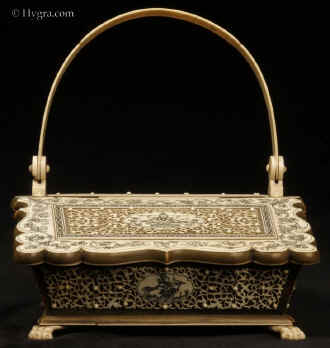
|
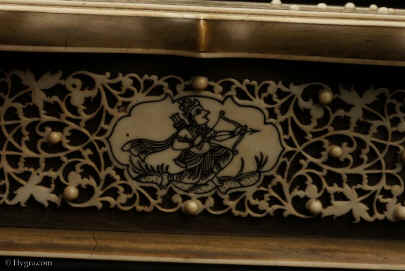
|
The horn has faded to a beautiful translucent luster.
|
Please click on images to enlarge | slide show | thumbnail index |
Please click on images to enlarge | slide show | thumbnail index |
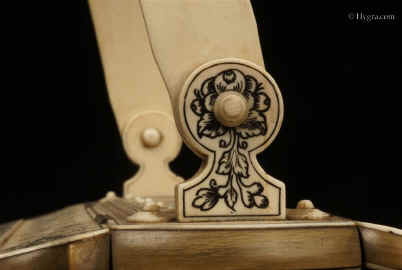
|
A
|
The fretting of the ivory is extremely fine. There appear to be
no saw marks even when viewed under magnification.
|
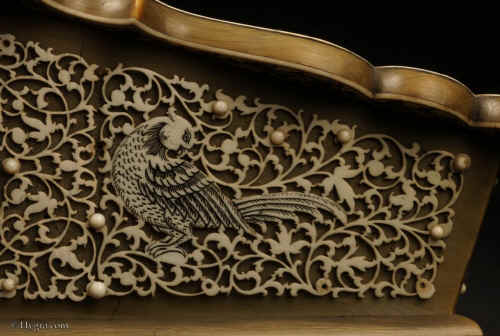
|
Please click on images to enlarge | slide show | thumbnail index |
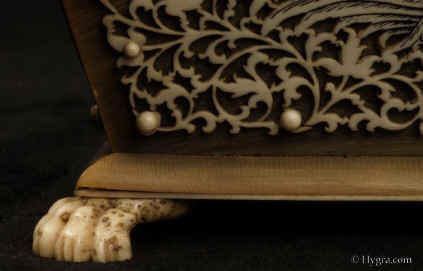
|
The box stands on carved lion
paw feet.
|
Please click on images to enlarge | slide show | thumbnail index |
Please click on images to enlarge | slide show | thumbnail index |
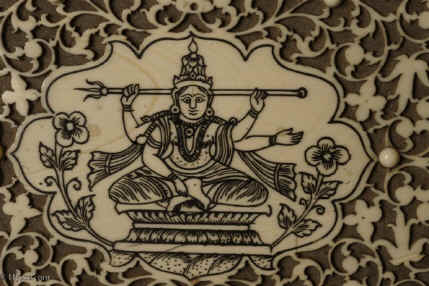
|
A
|
Please click on images to enlarge | slide show | thumbnail index |
References:
See Antique Boxes Tea Caddies Society
See: Furniture from British India and Ceylon Amin Jaffir
See: Luxury Goods from India: The Art of the Indian Cabinet-maker Amin Jaffer 2002
Other Anglo Indian boxes:
Below are some Anglo-Indian- boxes I have
documented on our site. It is becoming increasingly hard to find examples which
have survived with their integrity
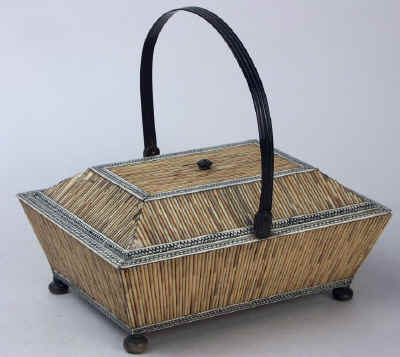
 


 

.thumb.JPG)

.thumb.JPG)

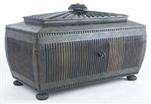
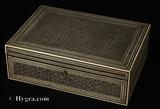
All text and images and linked images are ©
1999-2011 Antigone Clarke and Joseph O'Kelly. If you require any further
information on permitted use, or a licence to republish any material, email us
at copyright@hygra.com
|
